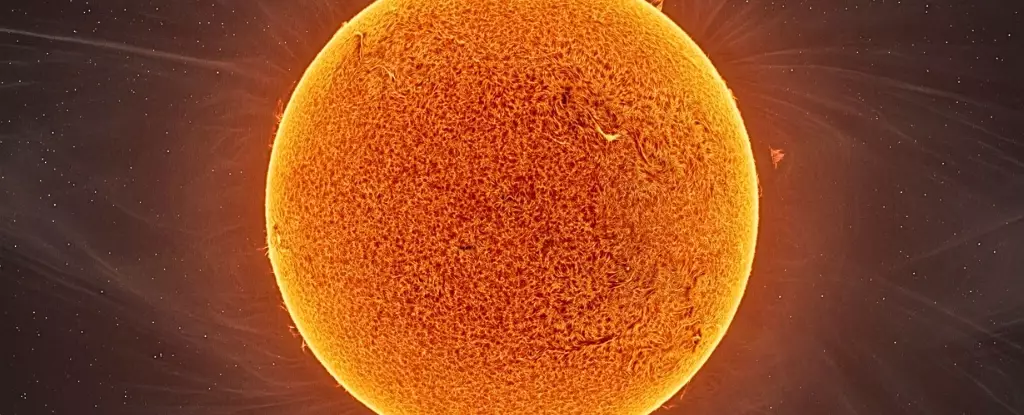The universe, vast and enigmatic, holds secrets that challenge our understanding of cosmic life cycles. Recently, a captivating study highlighted the phenomenon of starquakes—enormous vibrations triggered by bursts of gas bubbles within the fiery realms of giant stars. These celestial rhythms have revealed more than just the stars’ physical properties; they have unveiled a deeper narrative about the history of these luminaries and, by extension, the galaxy at large. As scientists dissect the resonance of these stellar harmonies, we uncover a new chapter in astrophysics that has the potential to reshape our comprehension of star evolution.
The Melody of M67
The M67 star cluster, located nearly 3,000 light years from our planet, became the stage for this groundbreaking research, which utilized data from the Kepler space telescope’s K2 mission. M67 is particularly intriguing because its stars share a chemical composition akin to that of our Sun, making it a cosmic time capsule. By analyzing the frequencies and “songs” of these stars, researchers accessed a treasure trove of information about their life cycles. It is reminiscent of listening to subtle shifts in music, each frequency telling a story—a story of life, transformation, and cosmic turmoil.
The study articulated how, as stars transition into their giant phase, they reach a point in their evolution where they “play the same part of their tune,” signifying a stagnation of sorts, a period in which their outer layers reach depths that are sensitive to their internal dynamics. This discovery doesn’t merely add to our knowledge; it fundamentally alters our grasp of stellar evolution, making what once seemed like an innocuous aspect of astrological study into a critical lens through which we can evaluate the life journey of celestial bodies.
Starquakes: Nature’s Seismographs
Starquakes occur similarly to earthquakes on Earth, revealing insights into the internal structures of stars. Just as seismic waves can help scientists understand the Earth’s inner layers, starquakes unveil the core operations of stars. The vibrations produced by these celestial eruptions resonate at specific “resonant frequencies,” allowing us to decipher the melodies these stars produce. In larger stars, these vibrations are a deep, slow hum, while smaller stars resonate at higher pitches—an enchanting symphony that tells us much about their structure and behaviour.
For decades, astronomers had relied on traditional methods to speculate about stellar evolution, often underestimating the potential richness of the small spacings in resonant frequencies found in red giants. However, the latest findings illustrate that these vibrations can provide invaluable information about the fusion processes occurring within a star, particularly during critical phases of their lifecycle. By comprehending these nuances, we can better interpret stellar evolution—an essential piece in the puzzle of understanding our galaxy’s past.
Unraveling the Cosmic Narrative
This study presents starquakes not just as curiosities but as robust historical documents that carry the imprints of environmental factors influencing their formation. By delving into the musical scores of these stars, we can unravel what happened eons ago in the Milky Way as galaxies merged, evolved, and transformed. Through precise age estimates garnered from analyzing the stalling frequencies during their giant phase, we can paint a clearer picture of cosmic history.
The idea of utilizing pre-existing seismic data and “listening” to stars anew carries profound implications. The symphony of the cosmos is not static; it changes, sometimes drastically, as new data emerges. Each star is a testament to the evolutionary forces at play, and we are just beginning to understand the complexity of the celestial orchestra surrounding us.
Reflections on Our Cosmic Future
Clusters like M67 offer a glimpse not only into the past but also into our solar system’s future. Understanding the life trajectories of stars within these clusters provides insights into what our Sun may undergo in billions of years ahead. This constant interplay between life, death, and rebirth within the universe unveils a grand cosmic story that humankind has only scarcely begun to interpret. In essence, these cosmic entities are not just distant points of light; they are the custodians of history, waiting for humanity to decipher their stories.
This new lens through which we observe the universe fosters hope and excitement for what the future holds in astronomical research. As we refine our capabilities to analyze stellar frequencies, we lay the groundwork for revolutionary discoveries that could redefine our standing in the cosmos. Each starquake we analyze becomes a note in a larger symphony, a mesmerizing reminder of the interconnectedness of all celestial bodies—and a beacon guiding us toward deeper understanding of our place in the vast expanse of the universe.


Leave a Reply